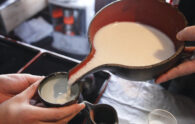Special classes about science and the ILC were held at 18 junior high schools in Ichinoseki City in the 2016 fiscal year, for students to learn about the importance of the fundamentals of science and the significance of bringing the ILC to fruition.
The classes were taught throughout the year by Associate Professor Junpei Fujimoto of the High Energy Accelerator Research Organization (also known as KEK), and Associate Professor Tomoyuki Sanuki of the Department of Physics, Graduate School of Science at Tohoku University.
Associate Professor Fujimoto dropped a baseball and a marble at the same time in his classes to see which would hit the floor first, referring to the famous Galileo Galilei, said to be the first in the world to have carried out such gravity experiments. Mr. Fujimoto told the students how Galileo’s experiments produced results that differed from theory of the time and what the majority of people believed in, and said: “There are some phenomenon you can’t know about without experimenting and confirming with your own eyes.”
Students got to try “cloud chamber” experiments in the second half of classes, and observed clouds of alcohol vapor created in paths taken by elementary particles. A reporter from the Iwate Nippo newspaper joined the class held at Sakuramachi Junior High School in July; the following is a translation of the article the next day (from page 19 of the July 8 edition).
—
“Experiments and learning about the ILC at junior high schools in Ichinoseki”
A special ILC class was held at Sakuramachi Junior High School on Thursday for the 86 students in the second grade, who learned more about the research that would take place at the proposed International Linear Collider, and the significance of building it.
Associate Professor Junpei Fujimoto of the Institute of Particle and Nuclear Studies at the High Energy Accelerator Research Organization (also known as KEK) in Tsukuba City, Ibaraki Prefecture, was asked to speak at the junior high school, and made use of dry ice (frozen carbon dioxide) in experiments to explain the nature of ILC research and the basics of elementary particles.
With regard to the goal of experiments at the ILC, Associate Professor Fujimoto said: “it is to discover the laws for the particles which make up everything in the universe,” and added: “it will take fifteen years for the ILC to be built and operating, right about when you students could be involved as researchers in the experiments.”
Kei Kimura, one of the second-grade students, looked satisfied and said: “I understood that elementary particles are smaller than atoms, and what kind of experiments would take place at the ILC.”
ILC classes are being held at all junior high schools in Ichinoseki City through to December, presented by Associate Professor Fujimoto and others involved with the ILC.
[Photo] Students observe the behavior of particles invisible to the eye via cloud chamber experiments using dry ice and alcohol.
(From Iwate Nippo, page 19 of the July 8 edition)
—
Associate Professor Sanuki also introduced physics history in his classes, and made use of a “Crookes tube” to see streams of electrons. Students then tried their hand at the cloud chamber experiments.
When asked about the ILC classes he taught this fiscal year, Associate Professor Sanuki said: “I started the classes thinking it’d be good if students felt that physics and science are really interesting. I realized that junior high school students were not taught very difficult concepts, so I spoke about the discoveries of elementary particles and the atomic nucleus, and tried to bring things that can be seen. I’ll be content (if a few students think that science and elementary particles are interesting after taking the classes). I hope a few students become interested in elementary particles, a few in computing or town planning, and so on.”
Ms. Akari Kita, a second grade student at Maikawa Junior High school who took a class taught by Associate Professor Sanuki (and who also took part in exchange with researchers at LCWS 2016, the International Workshop on Future Linear Colliders held in Morioka last December) said after the class:
“I learned at school that atoms were the smallest units of matter, but I learned today that even smaller particles such as quarks exist. I wondered how they’d been discovered, even though no one has ever seen them. That’s researchers for you, finding things we cannot see with the eyes.
“Being able to see the path (taken by elementary particles in cloud chamber experiments today) was a really valuable experience. They flew out at irregular intervals (in seemingly straight paths,) and I wondered why they were in straight lines, why they quickly disappeared, and where the particles went.
“I think (I understand why the cloud chamber led to a Nobel Prize in Physics), and I’d like to express my gratitude to the person who built it. In the future, we might be able to actually see quarks, electrons and so on. I might not be involved with physics at that time, but I want such research to be carried out in Japan. I hope that the ILC succeeds and mysteries of the universe are solved.”
ILC classes at junior high schools in Ichinoseki are scheduled to continue in the 2017 fiscal year.
Japanese
一関市の中学校で実験の重要性を学ぶネイト・ヒル
2016年、一関市内の全中学校18校において、基礎科学やILCについての特別授業が実施されました。これは、基礎科学の重要性やILC実現の意義などについて理解を深めることを目的として開催されたもので、高エネルギー加速器研究機構(KEK) 素粒子原子核研究所講師の藤本順平氏と東北大学大学院理学研究科准教授の佐貫智行氏が講師を務めました。
藤本氏の授業では、世界で最初に実験したとされているガリレオ・ガリレイの実験について触れ、野球ボールとビー玉を同時に落下させるとどちらが先に地面に到達するかを実演。実際に実験したことによってそれまでの理論や多数派が信じている説とは違った結果になったという話を紹介し「実験で実際に起こる現象を自分の眼で確かめてみないと分からないことがある」と強調しました。
授業の後半では、学生たちが霧箱実験を体験し、アルコールの雲として現れた素粒子の飛跡を自分の目で観察していました。岩手日報の記者が、7月に桜町中学校で開催された授業に参加しました。下記は、翌日に掲載された記事の英訳です。
【岩手日報新聞 7月8日付記事 19ページより(英訳】
佐貫氏の授業では、クルックス管という実験装置を使い、電子の流れを見たり物理学の歴史を紹介したほか、生徒たちは霧箱実験にも挑戦しました。今年度、佐貫氏が行うILC特別授業について尋ねた際、「中学生が物理や理科が本当に面白いんだというのが伝わればいい。中学校の理科というのはあまり難しいことを教えていないということが分かったので、素粒子と原子核の発見の歴史を話しながら、なるべく目に見えるものを持ってきて授業をした。授業を聞いた何人かが理科や素粒子が面白いと思ってくれれば十分。何人かが素粒子に興味を持って、何人かがコンピューターやまちづくりに興味を持ってくれれば。」と述べました。
舞川中学校2年生の北朱莉(きた あかり)さんも、佐貫氏のILC特別授業を受けました。彼女は、昨年12月に盛岡市で開催されたLCWS2016での研究者との交流会に参加しました。授業の後、「学校では原子が一番小さい物質だと習ったが、今日はクオークなどまだまだ小さい粒子があることが分かった。誰も見たことないのにどうやってクオークを発見したのか疑問に思った。目に見えないものを見つけ、さすが研究者だなと思う。また、今回は霧箱で素粒子の飛跡を見ることができたのは本当に貴重な経験だった。不規則に、直線のようになって吹き出てきたので、なぜ直線に出るのか、なぜすぐに消えてしまうのか、素粒子はどこへ行ったのか、疑問に感じた。私はなぜ霧箱がノーベル物理学賞を受賞したのか分かった気がした。霧箱を作った人に感謝したい。この先、クオークや電子までもが実際に見えるようになっていくのかもしれない。そのとき私は物理学に関わっていないかもしれないけど、その研究をぜひ日本で行ってほしい。ILCが成功して宇宙の謎が解明されることを期待している。」とコメントしました。
2017年度も引き続き、一関市の中学校でILC特別授業を実施する予定です。
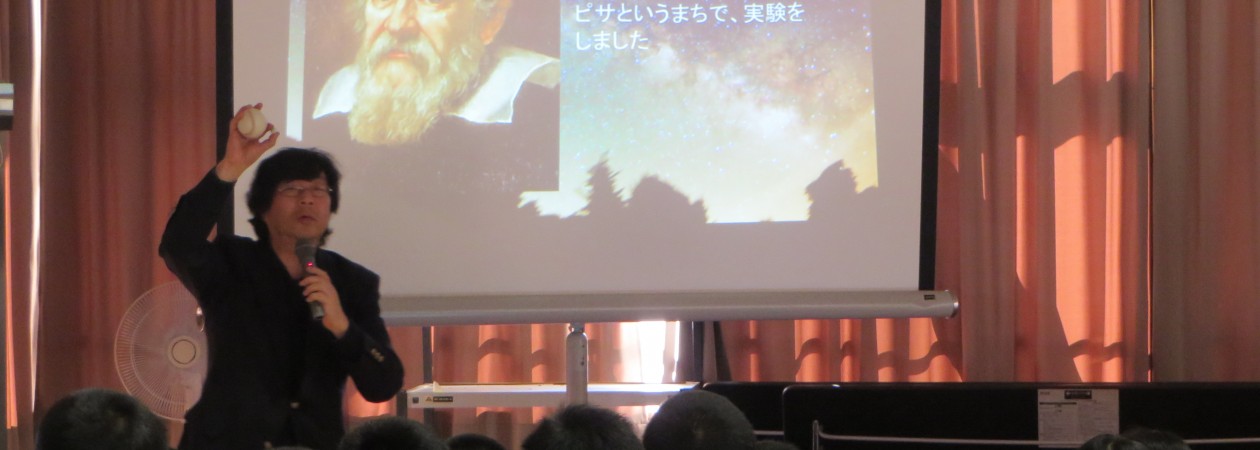
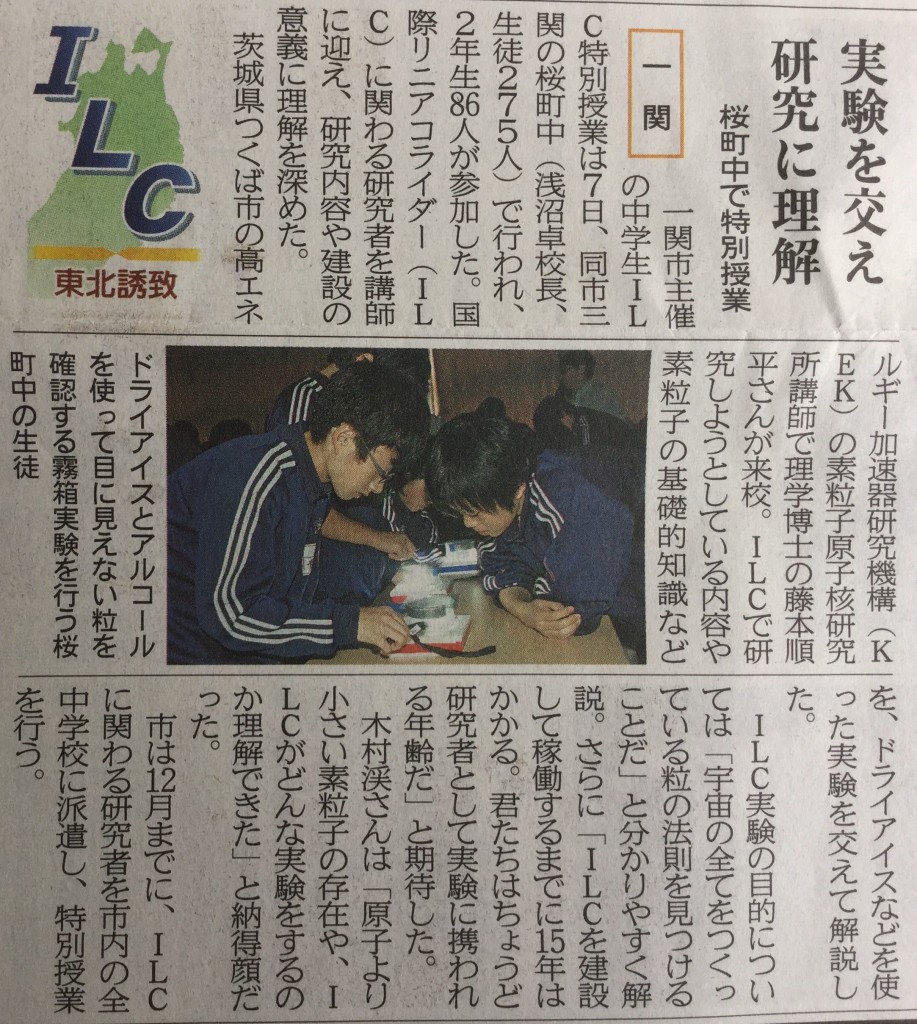
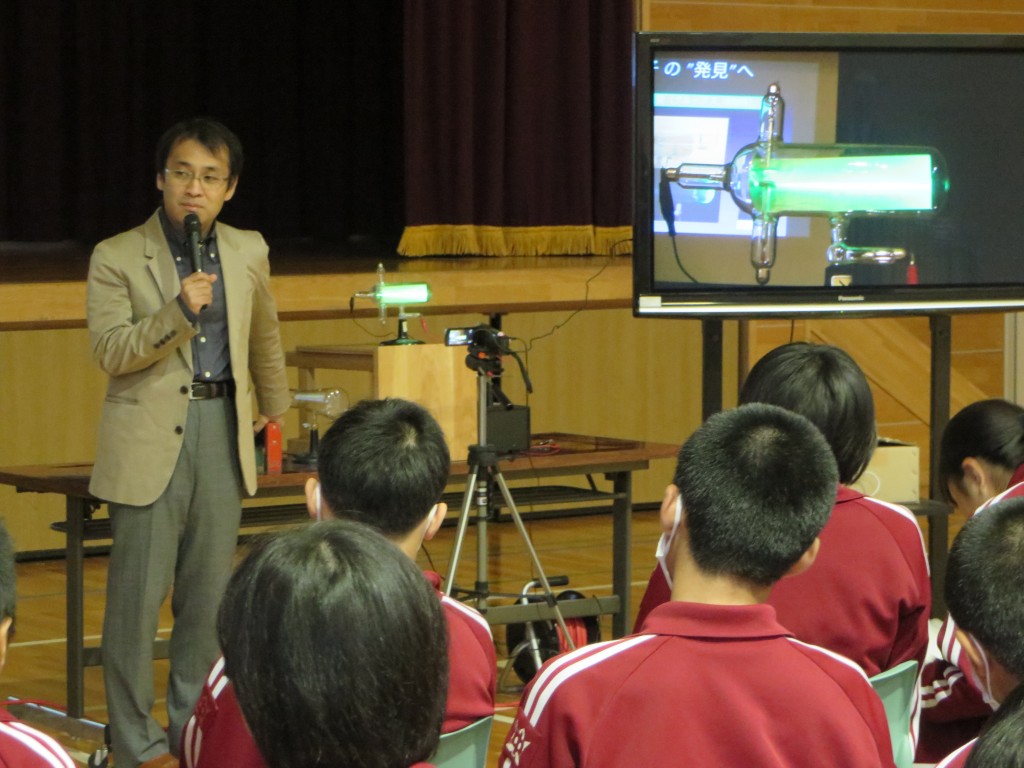
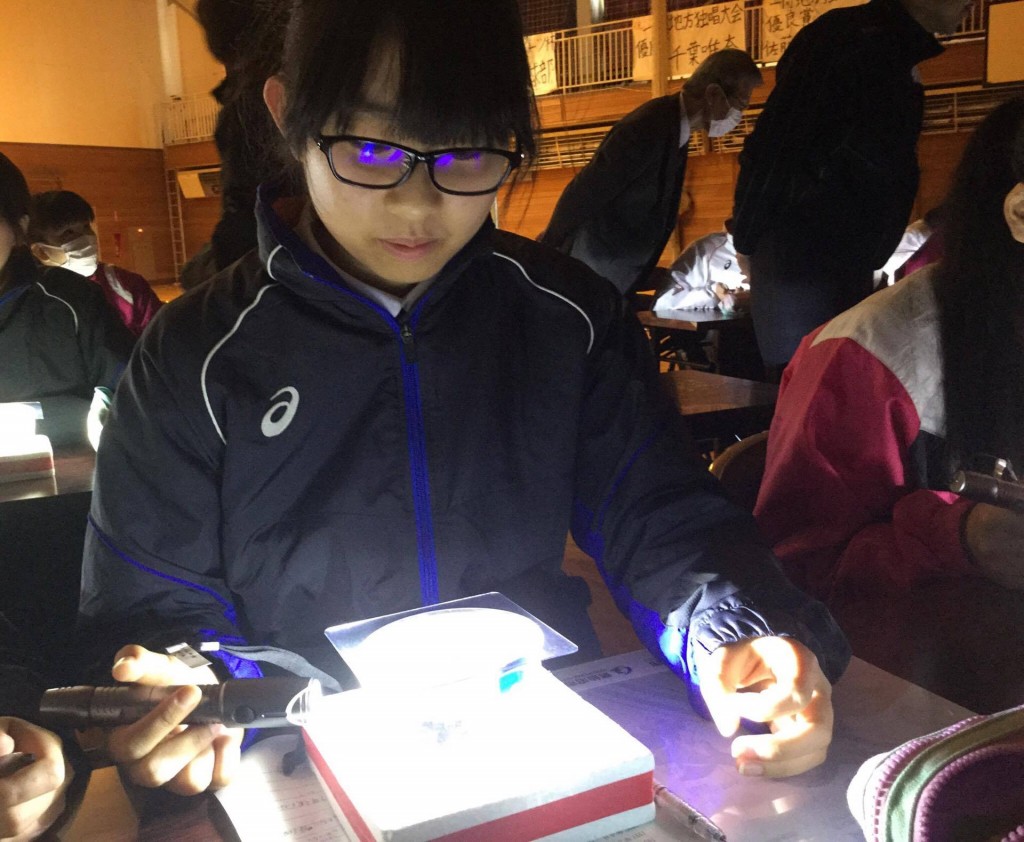
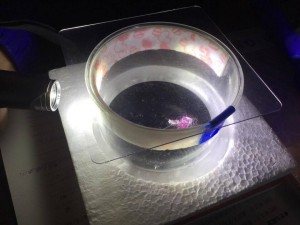
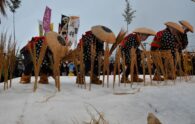
-195x124.jpg)
